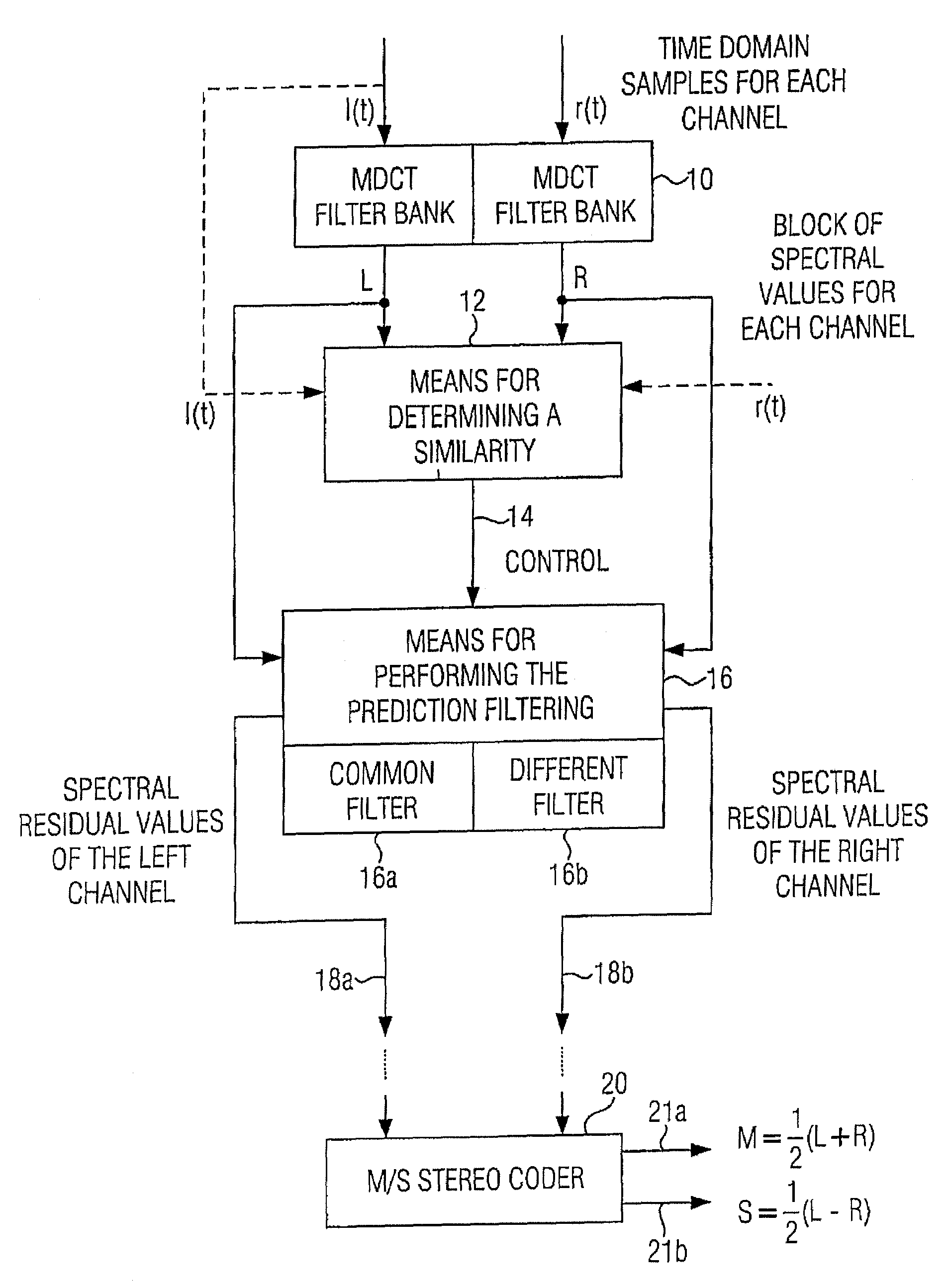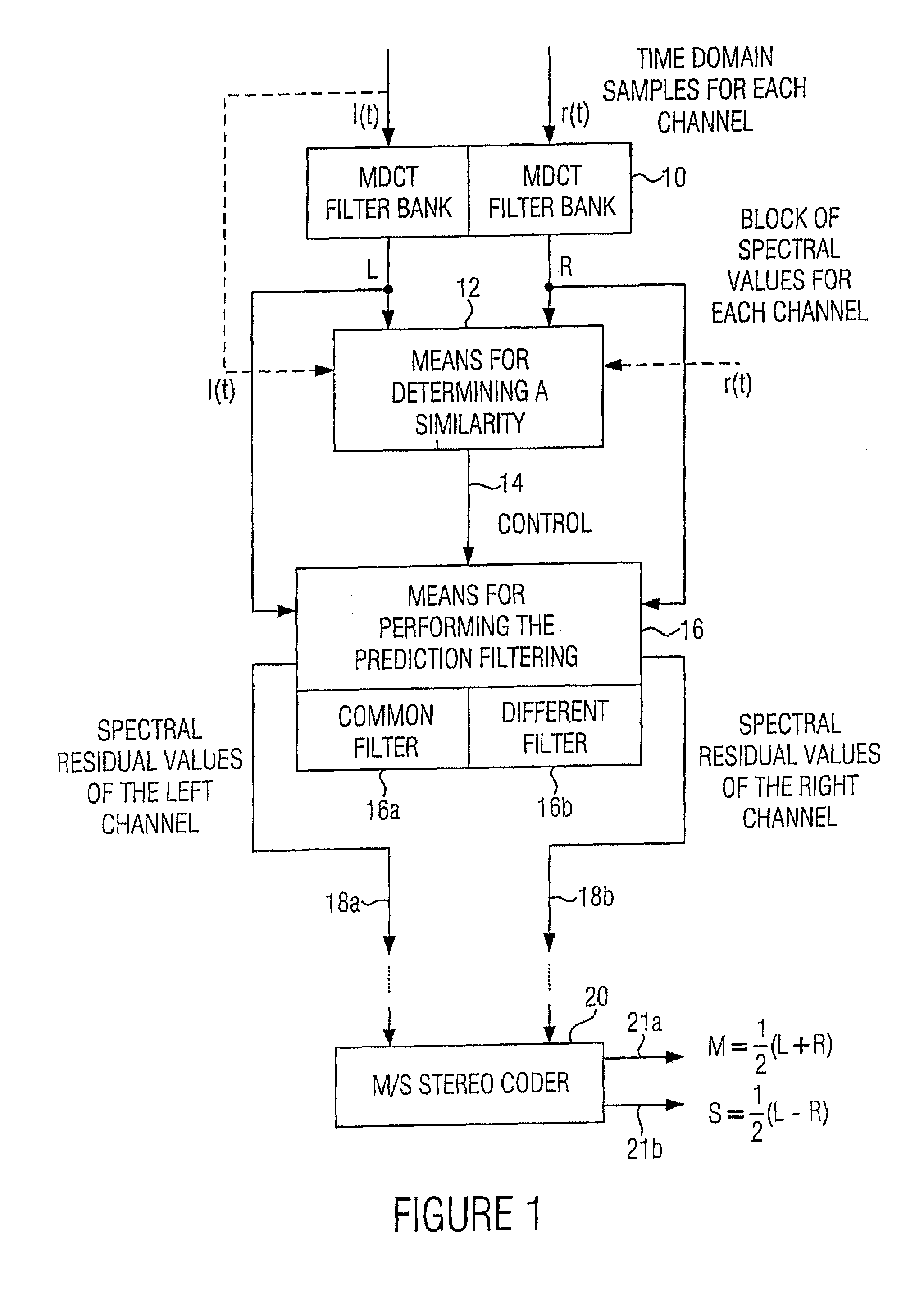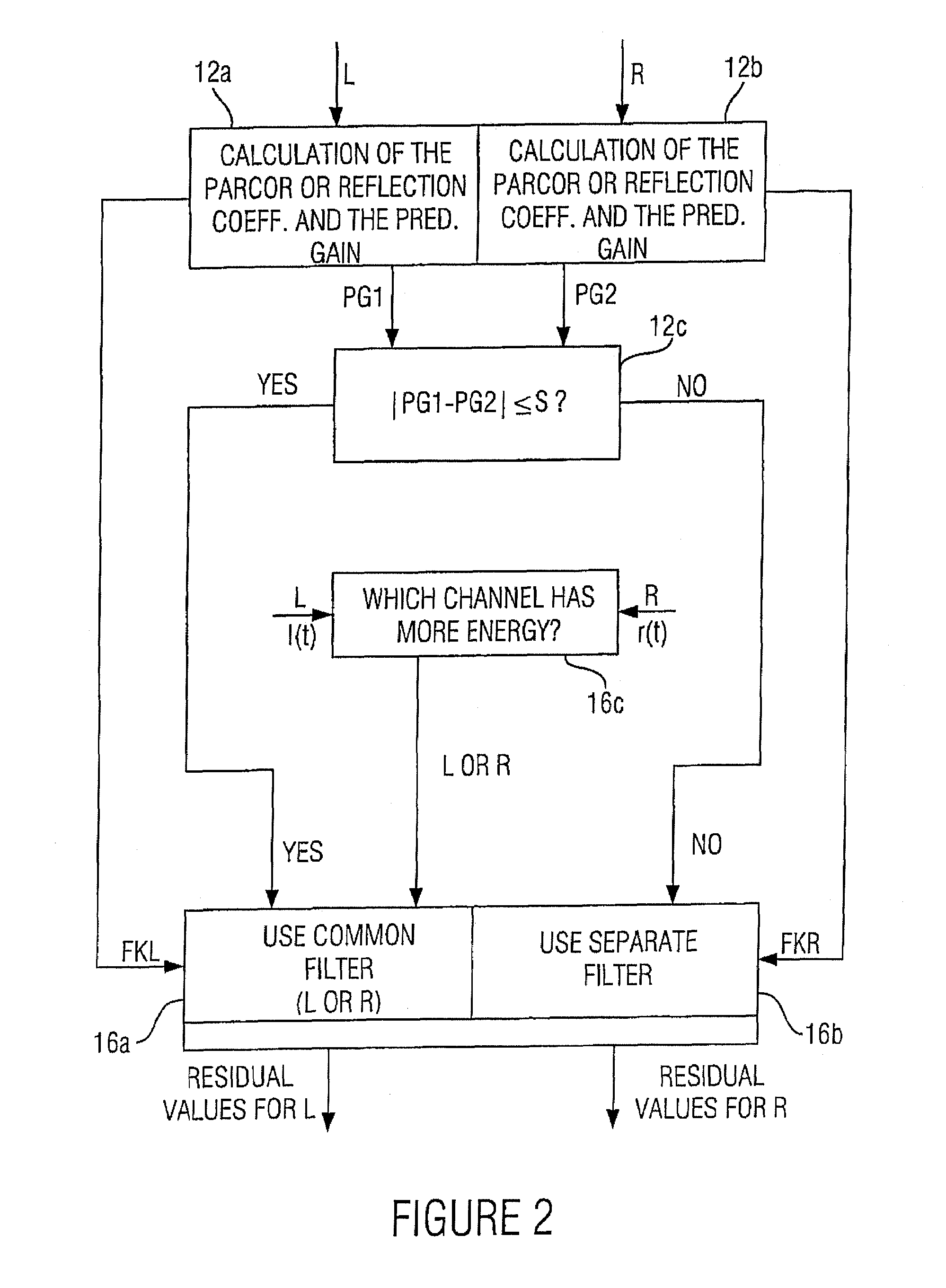Apparatus and method for processing a multi-channel signal
a multi-channel signal and audio coder technology, applied in the field of audio coders, can solve the problems of different temporal noise shaping also taking place in the two stereo channels, still unproblematic, audible artifacts, etc., and achieve the effect of reducing the mid/side coding gain and small loss in prediction gain
- Summary
- Abstract
- Description
- Claims
- Application Information
AI Technical Summary
Benefits of technology
Problems solved by technology
Method used
Image
Examples
Embodiment Construction
[0040]FIG. 1 shows an apparatus for processing a multi-channel signal, wherein the multi-channel signal is represented by one block of spectral values each for at least two channels, as it is shown by L and R. The blocks of spectral values are determined from time domain samples l(t) and / or r(t) for each channel by MDCT filtering, for example, by means of an MDCT filterbank 10.
[0041]In a preferred embodiment of the present invention, the blocks of spectral values for each channel are then supplied to a means 12 for determining a similarity between the two channels. Alternatively, the means for determining the similarity between the two channels may also, as it is shown in FIG. 1, be performed using time domain samples l(t) or r(t) for each channel. It is preferred, however, to use the blocks of spectral values obtained from the filterbank 10 for similarity determination, since these are equally influenced by possible effects of the filtering in the filterbank 10.
[0042]The means 12 f...
PUM
 Login to View More
Login to View More Abstract
Description
Claims
Application Information
 Login to View More
Login to View More - R&D
- Intellectual Property
- Life Sciences
- Materials
- Tech Scout
- Unparalleled Data Quality
- Higher Quality Content
- 60% Fewer Hallucinations
Browse by: Latest US Patents, China's latest patents, Technical Efficacy Thesaurus, Application Domain, Technology Topic, Popular Technical Reports.
© 2025 PatSnap. All rights reserved.Legal|Privacy policy|Modern Slavery Act Transparency Statement|Sitemap|About US| Contact US: help@patsnap.com



